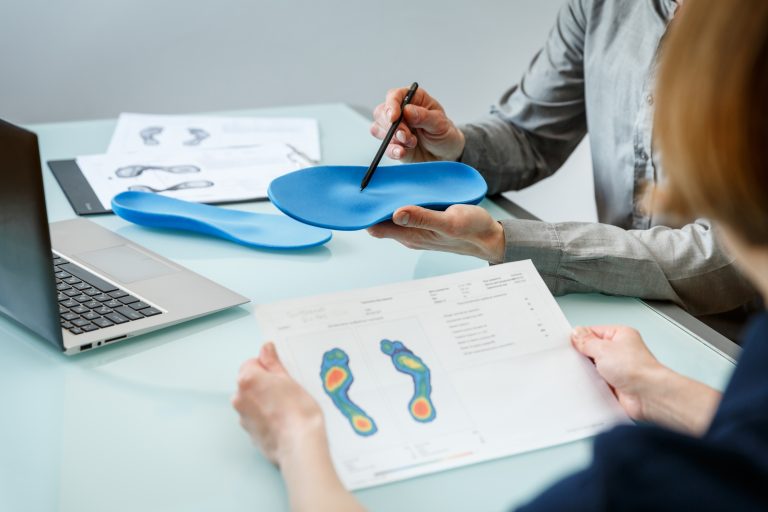The advantage of 3D-printed orthoses is that they completely conform to the patient’s foot, perfectly adjusting to the patient’s morphology and pathology. However, well-fitting orthoses also require the consideration of other essential factors that we propose to examine in this article.
Adapting to well-fitting orthoses takes time
It is crucial to let the patient know that wearing an orthosis, even one that is well-fitted, takes some getting used to. Wearing specialized orthoses can correct a position that the foot and the entire body are accustomed to. Therefore, they must incorporate these changes in order for the orthoses to feel natural and perform their supporting function. Give yourself two weeks to adjust, during which time it is normal and understandable to experience some discomfort. This is to be expected.
It is advised that you wear the orthoses for just an hour on the first day in order to speed up this acclimatization period and then gradually increase how long you wear them. If there is any discomfort, it is best to take the insoles out of the shoes and put them back on the following day. Remember that a properly fitting orthosis must be able to meet the patient’s needs all while being comfortable.
A properly fitted orthosis to address a particular need
A well-fitting orthosis must address a number of requirements, more specifically, the lifestyle and pathology of the patient who wears it. Custom orthoses come in a variety of types. Children’s orthoses can be used to prevent or treat specific biomechanical issues while also adjusting to the rapidly growing feet of young kids. Orthoses for athletes are primarily made to improve physical performance, absorb practice impact, and reduce the risk of injury. Orthoses for diabetics aid in weight distribution and prevent wounds from developing. Orthoses that accommodate the body lessen the strain on the joints and feet. These few examples highlight how crucial it is to provide orthoses that are carefully tailored to each patient’s unique circumstances in order to treat their issues.
Well-fitted orthoses should easily accommodate the patient’s shoe
A well-fitting orthosis should also be simple to put into the patient’s shoes, which is another thing to keep in mind. For this reason, it is essential for the professional to know the main types of shoes worn by the patient. Furthermore, the orthoses must fit comfortably. If not, the fit should be checked to ensure that it is ideal and can support the foot correctly without getting in the way of daily use.
Properly fitted orthoses made with 3D printing
The benefit of using 3D printing is that it can address every issue regarding a properly fitted orthosis. By digitizing and modelling the foot, we will be able to provide fully customized models thanks to this cutting-edge method. The outcome? An orthosis that is completely personalized to the patient’s morphology and can better meet their individual needs. Healthcare providers will be able to treat their patients’ plantar disorders as effectively as possible while avoiding further adjustments, which will save time and money alike.
Using 3D printing to create perfectly fitted orthoses
All orthoses require a period of adaptation, but once this happens, any initial discomfort or pain should vanish quickly. However, 3D-printed models easily win when it comes to the fit itself, thanks to their custom design, offering distinctive insoles that are perfectly moulded to the patient’s foot. This is crucial for properly fitting orthoses and is very beneficial for medical professionals and the patients they treat. Please get in touch with our team if you have any questions about Talaria’s custom orthoses; we would be happy to provide you with more information.
